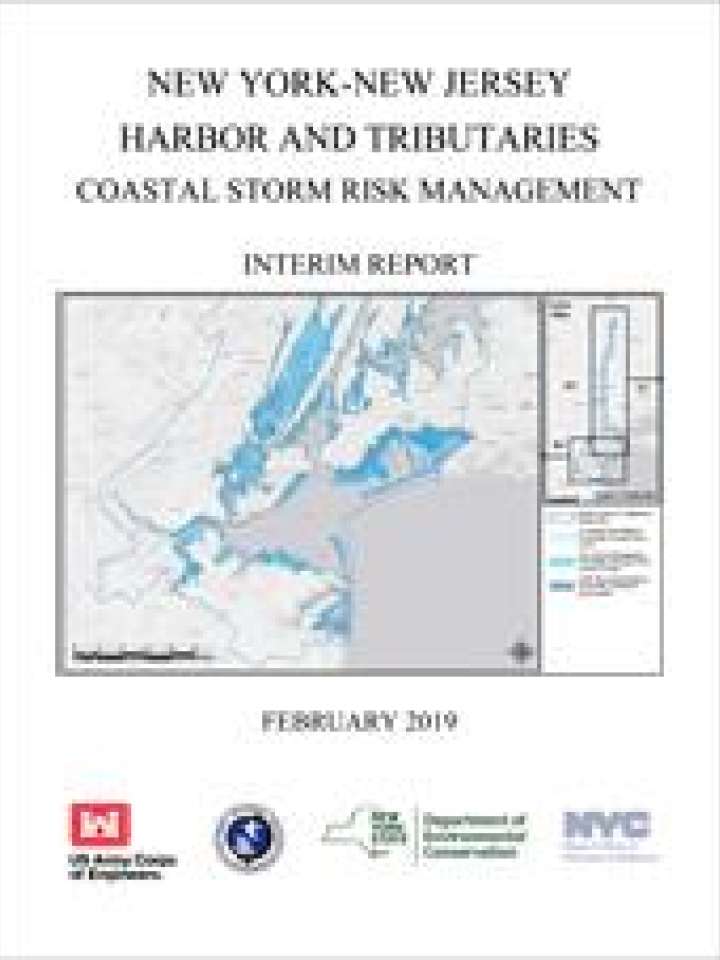New York-New Jersey harbor and tributaries coastal storm risk management: Interim report
Historical storms have severely impacted the New York-New Jersey Harbor region, causing loss of life and extensive economic damages. In response, the U.S. Army Corps of Engineers (USACE) is investigating measures to manage future flood risk in ways that support the long-term resilience and sustainability of the coastal ecosystem and surrounding communities, and reduce the economic costs and risks associated with flood and storm events for the New York-New Jersey Harbor and Tributaries (NYNJHAT) study area. The alternative concepts proposed would help the region manage flood risk that is expected to be exacerbated by relative sea level rise (RSLC). The study team has prepared this Interim Report to document existing information and assumptions about the future, and to identify knowledge gaps that warrant further investigation because of their potential to affect plan selection.
This report describes alternative concepts at preliminary stages of development. A key consideration for the ongoing development of these concepts is the range of future RSLC projections and the need for adaptability, to ensure long-term resiliency in the face of uncertain future conditions. For each alternative concept, there is a need for measures of various scales, which are often complementary, in order to investigate the feasibility of managing frequent flooding, which will worsen as sea levels rise, as well as managing the risk for larger, more catastrophic storms, like hurricanes and nor’easters, which can bring dangerous and damaging storm surge. This Interim Report also identifies key investigations needed to determine the optimal combination of such measures for coastal storm risk management (CSRM) in the NYNJHAT study area.
Explore further
